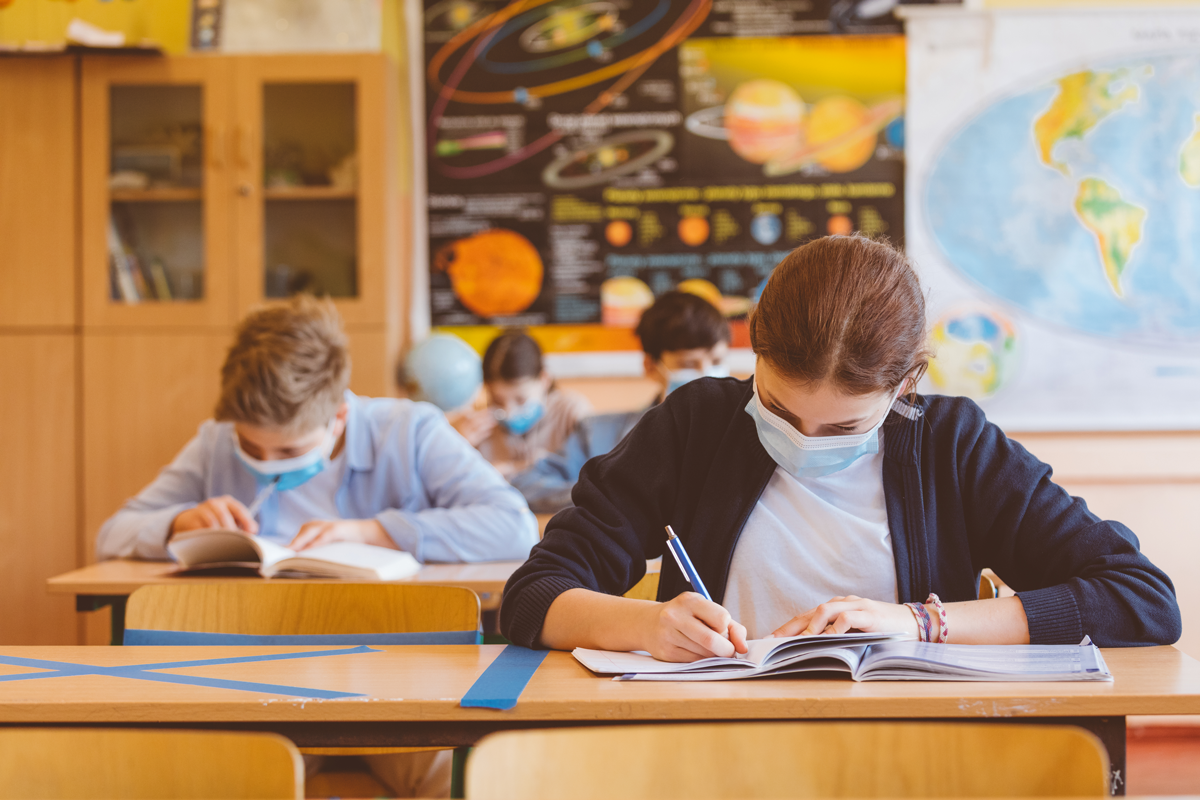In a wide-ranging press briefing that glanced back at the historical trends of the pandemic and looked ahead to the future of California’s fight against COVID-19, the California Department of Public Health unveiled a timeline for potentially changing the state’s school masking requirement. California Health and Human Services Secretary Dr. Mark Ghaly explained that his staff will continue to evaluate data on the pandemic in society generally, and in schools specifically, and then provide a public assessment of California’s masking policy on Feb. 28.
Ghaly did not commit to lifting the school masking requirement on Feb. 28, but his remarks suggested that if current trendlines continue, CDPH would consider softening or eliminating the mandate at a specific date in the future and would likely announce that timetable on Feb. 28. In the meantime, the department will reassess case rates, test positivity, overall hospitalizations, pediatric hospitalizations and vaccination rates to arrive at a decision on when school masking requirements might expire.
“Masking mandates were never put in place to be there forever — it’s not a question of ‘if,’ it’s a question of ‘when’,” Ghaly said, later adding that, “On Feb. 28 we anticipate being able to share what the next period of time will look like and, with some specificity, give a date when the masking requirement will move to a recommendation.”
Ghaly stated that the administration’s approach is informed by a desire to:
- Prioritize in-person instruction
- Ensure that there is a low risk of catching COVID-19 in schools
- Retire the masking requirements as conditions improve
- Remain prepared to adjust to changes in the overall COVID-19 environment
The hour-long presentation was followed by a 15-minute Q&A session with media outlets across the state as well as some national journalists. Throughout, Ghaly referred to data reflecting the state’s progress against COVID-19, particularly the advances made since mid-January when omicron was marching across the country. From Jan. 14 to Feb. 14, California saw:
- COVID-19 cases plummet 75.4 percent
- Hospitalizations fall 40.6 percent
- Hospital admissions drop 62.7 percent
- Test positivity decline 72.9 percent
Ghaly also noted that despite educating 12 percent of America’s students, California accounted for less than 1 percent of the nation’s school closures in 2022. He used these statistics to describe an improving environment for the mitigation of COVID-19 and the basis — assuming current trends continue — for the conversion of school masking rules from a mandate to a “strong recommendation.” That transition would mirror the change to the masking requirements that the state is making for non-school related indoor spaces on Feb. 15.
The state’s approach to this phase of the pandemic is driven by a desire for “humility, flexibility and evidence.” Specifically, Ghaly said that the state is adopting “smarter” testing policies, including permitting the use of antigen and over-the-counter tests and moving away from certain mitigation strategies like social distancing and individualized contact tracing.
In response to a question about whether removing the school masking mandate at the local level would make life harder for local educational agencies, and school boards in particular, that would then be forced to decide what level of COVID-19 mitigation measures they want to adopt, Ghaly indicated that he thinks the administration has found the right balance between state power and local control.
“Let me just be clear, the state has led and had requirements or application for our mitigation tools in specified ways throughout, not just in schools but all over. California has done this more than perhaps any other state in providing blanket protection across the state,” Ghaly said. “We talked about it not just at the local level, but at the school level — which is different — to provide them with discretion and to help inform those local decisions with the state as a floor. That’s been an important approach, and part of the decision, being announced today is to provide schools a chance to have these conversations, which will look different in different parts of the state, so people will be prepared.”





